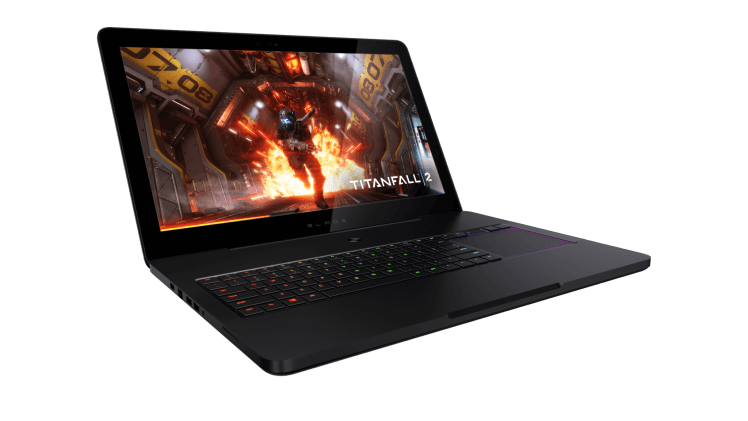Razer wants to give gamers a portable desktop replacement without any sacrifices, and it may have accomplished that with its latest notebook.
The company is updating its 17-inch Razer Blade Pro laptop with the Nvidia GeForce GTX 1080 graphics card like it did with the GTX 1060 in the standard Blade. What’s most impressive about this is that Razer isn’t changing the form-factor of the Blade Pro, and it somehow squashed the 1080 into a chassis that is only .88 inches thick. The entire package is also only 8 pound, and it brings with it a 4K G-Sync IGZO monitor and full Razer Chroma support on the keyboard and trackpad. The GTX 1080 Razer Blade Pro will ship in November for $3,700.
Here are the important specs:
- Nvidia GeForce GTX 1080 (8GB GDDR5X VRAM)
- Intel Core i7-6700HQ Quad-Core Processor (2.6 GHz / 3.5 GHz)
- 17.3-inch IGZO UHD G-SYNC, 16:9 ratio, 3840 x 2160 with LED backlight and capacitive multi-touch
- Windows 10 64-bit
- Storage options: 512 GB SSD RAID 0 (2x 256 GB PCIe M.2) / 1 TB SSD RAID 0 (2x 512 GB PCIe M.2) / 2 TB SSD RAID 0 (2x 1 TB PCIe M.2)
- 32 GB Dual-Channel System Memory (DDR4, 2133 MHz)
- Anti-ghosting individually backlit ultra-low-profile mechanical keyboard
This is a huge leap forward for the Razer Blade Pro. The 2015 model debuted with Nvidia’s mobile 900-series graphics chips, which were capable but much slower than their desktop counterparts. The 1080 in the 2016 Pro, however, is nearly identical to the desktop version that is one of the most powerful graphics cards ever made. This makes the Razer Blade Pro a hyperpowerful machine that can handle any game or VR headset you throw at it.
“The original 17-inch Blade was the first laptop that truly blended power and portability in a PC,” Razer chief executive and cofounder Min-Liang Tan claimed in a statement. “We’ve taken that approach another step further with the new Razer Blade Pro.”
While Razer points out that its engineers did a lot of magic to ensure that the thermal dynamics inside the Pro make sense and won’t burn off your fingerprints, this kind of machine is only possible because of the advancements Nvidia has made with the 16nm chip architecture it uses in its Pascal graphics cards. This smaller process produces more power with less heat and with less of a demand on power.
“It’s impressive what Razer was able to pack into the new Razer Blade Pro,” Nvidia gaming-laptop senoir product lead Mark Aevermann said in a statement. “They have managed to design a gaming laptop with our flagship GeForce GTX 1080, in a form factor gamers can take with them on the road.”
VentureBeat's mission is to be a digital town square for technical decision-makers to gain knowledge about transformative enterprise technology and transact. Learn More

